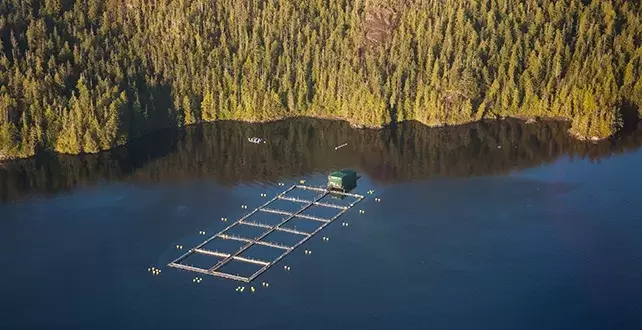The future of salmon farming in British Columbia should depend on agreements with local First Nations, according to a recent advisory council report on the aquaculture industry.
For 18 months the diverse 20-member council studied the impacts of fish farms on the West Coast, with representatives from the aquaculture industry, DFO, the provincial government, universities, environmental advocacy groups and First Nations. The Nuu-chah-nulth presence on the council includes Keith Atleo, operations manager for the Ahousaht First Nation and the Ahous Business Corporation, and Tla-o-qui-aht Natural Resource Director Saya Masso.
The provincial government released the advisory council’s report in early April as it determines the fate of a current moratorium on new aquaculture tenures for the B.C. coast. The council’s 221-page document weighs the diverse interests that have surrounded fish farming for decades.
Other recommendations are regulated limits on the number of farmed fish within a certain area, the establishment of an independent scientific council to monitor the industry and placing farms in areas with low salinity to reduce the chance of sea lice infestations.
“Currently, the primary concern about fish farms relates to the potential impact of pathogens transferring from farmed to Pacific wild salmon,” stated the report. “Since the vast majority of net-pen salmon farming is conducted in southern B.C., the exposure of wild salmon populations to net-pen salmon farms is inevitable in this area at some geographic scale.”
Aquaculture has grown over the last 30 years to become B.C.’s largest agricultural export, with 70 per cent of the 90,000 tonnes harvested annually being sold to markets outside of Canada. The report notes that in 2016 the industry had a gross domestic product of $557.8 million from the equivalent of 6,600 full-time jobs.
“Most farm sites have support from some, if not all First Nations who claim rights in a tenured area, and there are 20 operating agreements covering approximately 78 per cent of the industry’s total production,” stated the report. “Other First Nations, both local and elsewhere on the coast and in the B.C. Interior, continue to be opposed to the farms.”
Opposition over the last year has led some First Nations groups to occupy fish farms in the Broughton Archipelago northeast of Vancouver Island. The province is currently reviewing 20 site tenures in this area that are up for renewal in June.
The BC Salmon Farmers Association responded to the advisory panel by mostly supporting the report – but the industry group noted concerns about requiring First Nations approval to fish farms that have been operating on Crown property for years. In an April 5 news release the association said this recommendation “is unclear and would be unworkable in practice.” The news release stressed that the advisory council’s mandate was to offer government advice on new aquaculture tenures – not existing ones.
“Some salmon farms have been in place for 30 years, and are key employers in their communities,” stated the association’s release. “All salmon farmers who hold existing licences have reached out to all local First Nations and in most cases secured agreements on how to work together through open dialogues.”
“However, in a handful of cases a local community has refused to even speak with local farmers, so dialogue and reaching an agreement has not been possible,” continued the BC Salmon Farmers Association.
Over the last two decades fish farms on the west coast of Vancouver Island have progressed to operate in partnership with the local Nuu-chah-nulth nations.
In 1997 the Tla-o-qui-aht First Nation’s council opposed aquaculture with a resolution to “not accept or renew any fish farm tenures or leases” in its territory. But three years later a temporary agreement was made with Creative Salmon to continue with its chinook farm sites. With attention to burial sites near farms, whale habitat and other wildlife, septic tank handling as well as environmental assessments, a protocol agreement has developed between the two parties that now provides education and salmon enhancement opportunities to the Tla-o-qui-aht.
Cermaq runs 14 fish farm sites in Ahousaht territory under an agreement made in 2002. This provides employment, habitat enhancement funds, economic development and scholarships to the First Nation. The agreement “respects claims for constitutionally-protected rights and title in farming areas,” according to a joint presentation given by Ahousaht members and Cermaq to the advisory panel.
The company states that 30 per cent of its 250 employees on the West Coast are First Nations.
“We have some site managers on the west coast that are from Ahousaht,” said Grant Warkentin, Cermaq’s communications officer.
Cermaq’s agreement with Ahousaht follows 10 principles the company has committed to in dealing with First Nations. These include a pledge to “sustainability and respect for the land and its resources.”
Warkentin said farmed salmon are screened for disease before they transfer from a hatchery to ocean-based net pens.
“Then we monitor their health through daily checks, though our fish health team and the veterinarians who check the health of the fish regularly,” he said. “Our view is that healthy fish in our pens don’t pose a threat to any other fish on the outside.”







